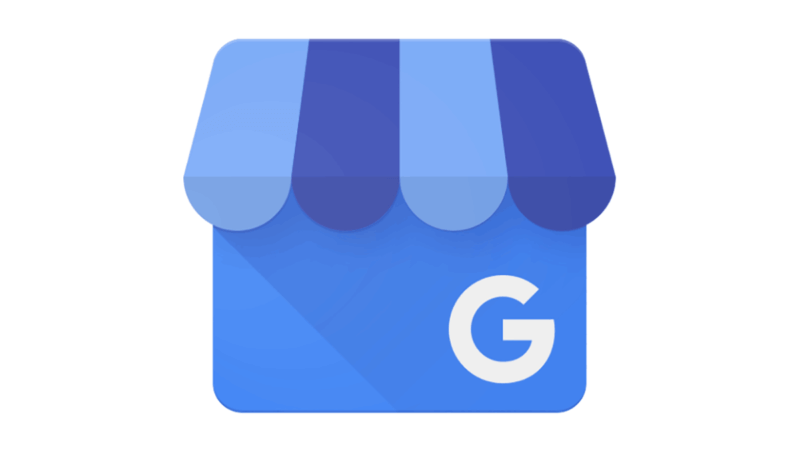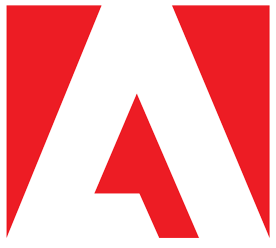I Make $8K/Month Handling Email Marketing For 6-Figure Ecommerce Brands
Hello! Who are you and what business did you start?🔗
Hi, my name is Danavir Sarria and I’m an eCommerce marketing consultant. I run 3 businesses including SupplyDrop, Rooftop Squad, and DanavirSarria.com. The focus for this article is SupplyDrop, which I consider to be my “flagship” business.
SupplyDrop is an eCommerce email marketing agency based in Miami, FL. We help scale 6, 7, and 8 figure eCommerce brands with full-service email marketing services. Some of our past clients include Kettle & Fire, Lensabl, Verb Energy, Fangoria, Drink02, Australian Face Masks, Cup & Leaf, SoShape, and Haven Athletic.
Currently, we’re making $8,000/month on average. The agency has been a side project for the majority of the time it’s existed due to my other business ventures. But over the past few months, I’ve decided to triple down on SupplyDrop and we just had our biggest month yet (definitely more than $8,000/month!).

What's your backstory and how did you come up with the idea?🔗
I’ve been a consultant since I was 16 years old (11 years ago!).
I started as a freelance email marketer for a popular street magician on Youtube who sold “how to do street magic” courses. For 7 years after that, I continued as a freelance direct response copywriter and email marketer for both small and large online course businesses alike.
I knew I always wanted to start an eCommerce brand during this time, but I never got around to it. Eventually, though, I became tired of online courses and decided to just go after my dream of building a luxury sportswear brand for men. So I quit everything I was doing and invested $14,000 to go all in.
After 18 months, I had to close it down because it wasn’t profitable. However, the experience got me hooked on eCommerce and I figured the best way to stay in the space was to do client work again, but as a freelance eCommerce email marketer.
After a ton of trial and error, I realized that eCommerce email marketing was best sold as a full-service package, which involved skills that went beyond just copywriting. So once I started attracting organic leads, I decided to move the focus from me to the SupplyDrop brand. For many months, it was just a side project. Once I started nailing my lead generation and sales process though, hot leads started coming in the door regularly and I decided to triple down on it.
Today, I consider SupplyDrop to be my “flagship business” because it drives the most consistent and reliable cash flow with the least amount of moving parts, which I can then use to reinvest into bigger projects down the road.
Take us through the process of designing your business offering.🔗
Because I already had experience as an email marketing consultant, I already knew the gist of how to sell it as a service to eCommerce business owners. However, it took a lot of testing to figure out how to best package it because the needs of eCommerce business owners are completely different from that of online course businesses.
There is very little information on the internet about how to run an eCommerce email marketing agency. I’ve also found that eCommerce agencies tend to be more protective about their advice-giving than freelancers are, so I had to learn almost everything on the fly.
Here’s a complete timeline of pivots I made:
- My first 2-3 clients were whichever businesses were willing to give me money
- These first clients were health brands, so when I pivoted to SupplyDrop, I also pivoted to performance-based email marketing to food & beverage brands
- No one took me up on performance-based pricing and my lead generation skills didn’t align with such a niche target market, so I pivoted to flat retainers for all eCommerce businesses
- This pivot helped with lead generation, but I had trouble closing clients because we charged $5,000+/month and we specialized in plain-text emails (eCommerce brands do not like paying for plain text!)
- To increase our closing rate, I lowered our rate to $2,500/month and switched from plain-text emails to beautifully designed promotional emails. This made a huge impact on our closing rate
- After being on a ton of sales calls, I realized clients wanted every cent of their investment laid out for them so they could understand what they were paying for. In response, I productized our service, which then made selling much easier and further increased my closing rate
- We had problems with consistent lead generation, so I tripled down on the things that worked. This includes improving our messaging to show we’re a higher ROI alternative to hiring in-house, while also promoting that message to the marketing channels that were working (Twitter and Facebook)
There is very little information on the internet about how to run an eCommerce email marketing agency. I’ve also found that eCommerce agencies tend to be more protective about their advice-giving than freelancers are, so I had to learn almost everything on the fly. Luckily, after months of testing, I finally found a business model that works.
Describe the process of launching the business.🔗
Starting SupplyDrop was very simple.
Because of prior online course businesses, I had a small audience of freelance copywriters and direct response business owners. While the majority of the audience was not my target market, once I decided to make the switch to eCommerce, I made a big announcement about it everywhere I could.
This means an email to my list and a few posts on Facebook.
Luckily, this allowed me to land my first eCommerce email marketing client ever. Funny enough, I didn’t land them because they saw my announcement and reached out to me. Instead, it was a follower of mine who ran a Facebook ad-buying agency that referred that client to me.
In total, it took about 1-2 weeks to land my first few leads.
Since launch, what has worked to attract and retain customers?🔗
I’ve tried everything from cold emailing to starting a podcast so I could pitch to my guests right after the interview. Almost every tactic I did either failed or just didn’t align with my strengths and interests.
What has always worked for me though has been content marketing. Because of my background as a direct response copywriter in the online course business (aka the expert business), I knew I was great at positioning myself as an expert.
Since then, what has worked best has been creating thought leadership content in communities where other eCommerce business owners spent their time. This primarily means publishing daily tweets on Twitter and weekly, long-form posts inside of eCommerce marketing Facebook groups.

Besides this, the biggest thing has been nailing our offer, which affects everything from the content I’m producing, to promoting the agency in our sales calls.
Today, we offer full-service email marketing to 6, 7, and 8 figure brands. By full service, I mean we handle your entire email marketing operation, from the strategy and calendering to the creative and Klaviyo management. Normally, you would have to spend $150,000+ in yearly wages to have a true in-house team who can match our expertise, production capabilities, and processes. With us, you can get started for as little as $3,500/month.
We also offer standalone “email flow setups”, where we’ll build or refresh all of your email flows as a one-off project. This is usually a service we offer to small brands who are ready to run ads but can’t afford to hire us every month.
How are you doing today and what does the future look like?🔗
While we make $8,000/month on average, the past 2 months have seen us go past the 5 figure mark because of the latest pivots we made to both our lead generation strategy and service offering. Because of this recent growth, I’m slowly working on expanding from being a freelancer with contractors to building a real team.
To maximize our lead generation, I’m currently transforming SupplyDrop into a content machine. While I will still promote my agency through e-commerce communities, I’m making a big push to turn the agency into a media company that sells eCommerce marketing services in the backend. This means using SEO to grow our audience, while expanding into email newsletters, podcasts, Slack, and even our conference to promote our services.
The reason is that agencies need to be top of mind. You can’t expect to sell services like you would a product. Clients won’t come knocking at your door just because you have a few spots open or because you’re having a 20% off special. Instead, clients look for service providers passively, but once they have a pressing need, they’ll always opt for hiring the agency they know, like, and trust the most.
The best way to be known liked, and trusted in B2B is to produce amazing content through every medium they consume so that when they do need to hire an agency, your agency is on the top of that list. By building a popular blog and expanding our content into the most popular channels in B2B, I can grow the SupplyDrop brand to the point where clients manually type in “SupplyDrop” on Google once it’s time to hire us.
In addition to this, I’ll be implementing a “Dream 100” strategy to land the biggest accounts in eCommerce, which will not only drive major revenue but also elevate the SupplyDrop brand to new heights.
Lastly, I expect that around the mid 6 figure mark, we’ll need to expand from just email marketing to also offer other services. That’s why in the future, we’ll also be offering media buying and creative ad services.
I expect to grow SupplyDrop into a $5MM/year eCommerce marketing agency with a 20% gross margin.
Through starting the business, have you learned anything particularly helpful or advantageous?🔗
I’ve learned the difference between proof and trust.
Marketing agencies are trust-based businesses. So if you want clients, you have to do everything you can to earn their trust before you try to officially close them
Ultimately, selling marketing services is about trust rather than proof. While you can use proof to build trust, you’re still only selling to the rational mind. If you want clients who get on sales calls with you, tell you you’re the best at what you do, and practically sell themselves into your service, then you have to sell to their emotional mind by winning their trust.
The best way I’ve found to win trust is to produce highly opinionated thought leadership content for long periods. You can’t push people into hiring you right now. Instead, you have to create a situation where they think of you first when they do need you.
In addition to this, I’ve learned a lot about cash flow.
While I have other business ventures, the reason I consider SupplyDrop to be my “flagship” business is that it's a cash flow positive business. In other words, even though it requires a lot of man-hours compared to other business models, it’s still always profitable and the money is in my hands before anything gets done.
This makes SupplyDrop my best vehicle to build wealth as I can take that money to invest in more scalable and long-term investments.
What platform/tools do you use for your business?🔗
We keep our tech stack to a bare minimum.
Klaviyo - We only help eCommerce brands that use Klaviyo as their email service provider. Of course, clients provide us with their Klaviyo accounts.
Figma - This has helped us speed up our email design production because it allows us to easily collaborate on emails before officially exporting everything to our clients.
Photoshop - While we do most of our design work on Figma, we still use Photoshop to help design specific assets that Figma can’t handle.
Google docs - When it’s time to deliver emails to our clients for final approval, we upload everything in Google docs so clients can easily comment on what they want to change.
Zoom - All calls are hosted on Zoom
Gmail - Our primary communication method, whether for clients or our team, is email.
Dropbox - We use Dropbox to send files between team members.
What have been the most influential books, podcasts, or other resources?🔗
Ogilvy on Advertising has been the biggest, most influential book for me when it comes to running SupplyDrop. For years, I’ve always wanted to be like David Ogilvy and build my own Ogilvy & Mather. And considering Ogilvy was a direct response copywriter himself, I always used him as inspiration for my ambitions.
I’m also a big fan of Built To Sell, which is a book all about how to productize a marketing agency so you can eventually sell it one day. The biggest lesson I’ve learned is that the secret to building an efficient agency is to treat your entire service as a product. In other words, focus on selling one repeatable service as a step-by-step process and get paid upfront for it.
Lastly, I’ll add in anything published by Robert Rose and Joe Pulizzi. While I’ve always believed in content marketing, they’ve done a great job in actually systematizing how non-media businesses should use content to drive revenue. My favorite piece of advice was when Robert Rose said first to build your own Vice Magazine, then launch a consultancy in the backend, rather than trying to build an agency. While this is a big effort, it’s the idea of content-first entrepreneurship that matters.
Advice for other entrepreneurs who want to get started or are just starting out?🔗
Marketing agencies are trust-based businesses.
So if you want clients, you have to do everything you can to earn their trust before you try to officially close them. This means collecting case studies, producing content, trying to get in with a big client even if it’s only for minor work, doing your best to get referrals, offering free audits when you’re starting, and more.
Instead of trying to become the next Wolf of Wall Street, you’re much better off doing 90% of the selling before a lead ever gets on the phone with you.
Then when they do get on the phone with you, listen closely to what clients are saying and how they are saying it. After enough phone calls, you should be able to identify what part of your lead generation is working and which part isn’t.
Where can we go to learn more?🔗
- SupplyDrop - We scale 6-8 figure eCommerce brands with email marketing
- Rooftop Squad - Internet’s best grooming advice for men
- Danavir Sarria - Ecommerce marketing courses
If you have any questions or comments, drop a comment below!

Download the report and join our email newsletter packed with business ideas and money-making opportunities, backed by real-life case studies.

Download the report and join our email newsletter packed with business ideas and money-making opportunities, backed by real-life case studies.

Download the report and join our email newsletter packed with business ideas and money-making opportunities, backed by real-life case studies.

Download the report and join our email newsletter packed with business ideas and money-making opportunities, backed by real-life case studies.

Download the report and join our email newsletter packed with business ideas and money-making opportunities, backed by real-life case studies.

Download the report and join our email newsletter packed with business ideas and money-making opportunities, backed by real-life case studies.

Download the report and join our email newsletter packed with business ideas and money-making opportunities, backed by real-life case studies.

Download the report and join our email newsletter packed with business ideas and money-making opportunities, backed by real-life case studies.
















